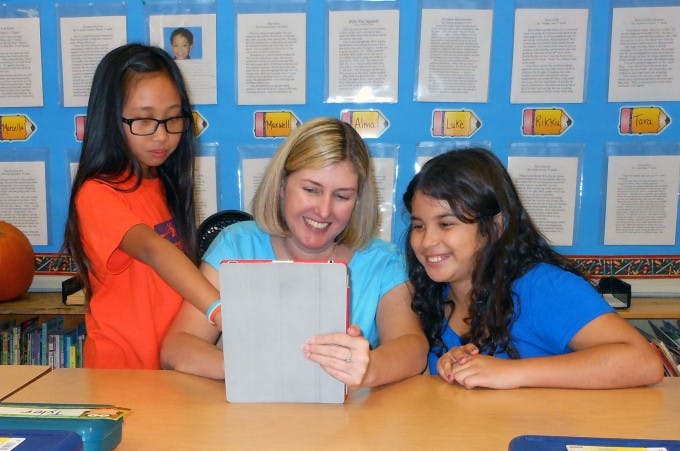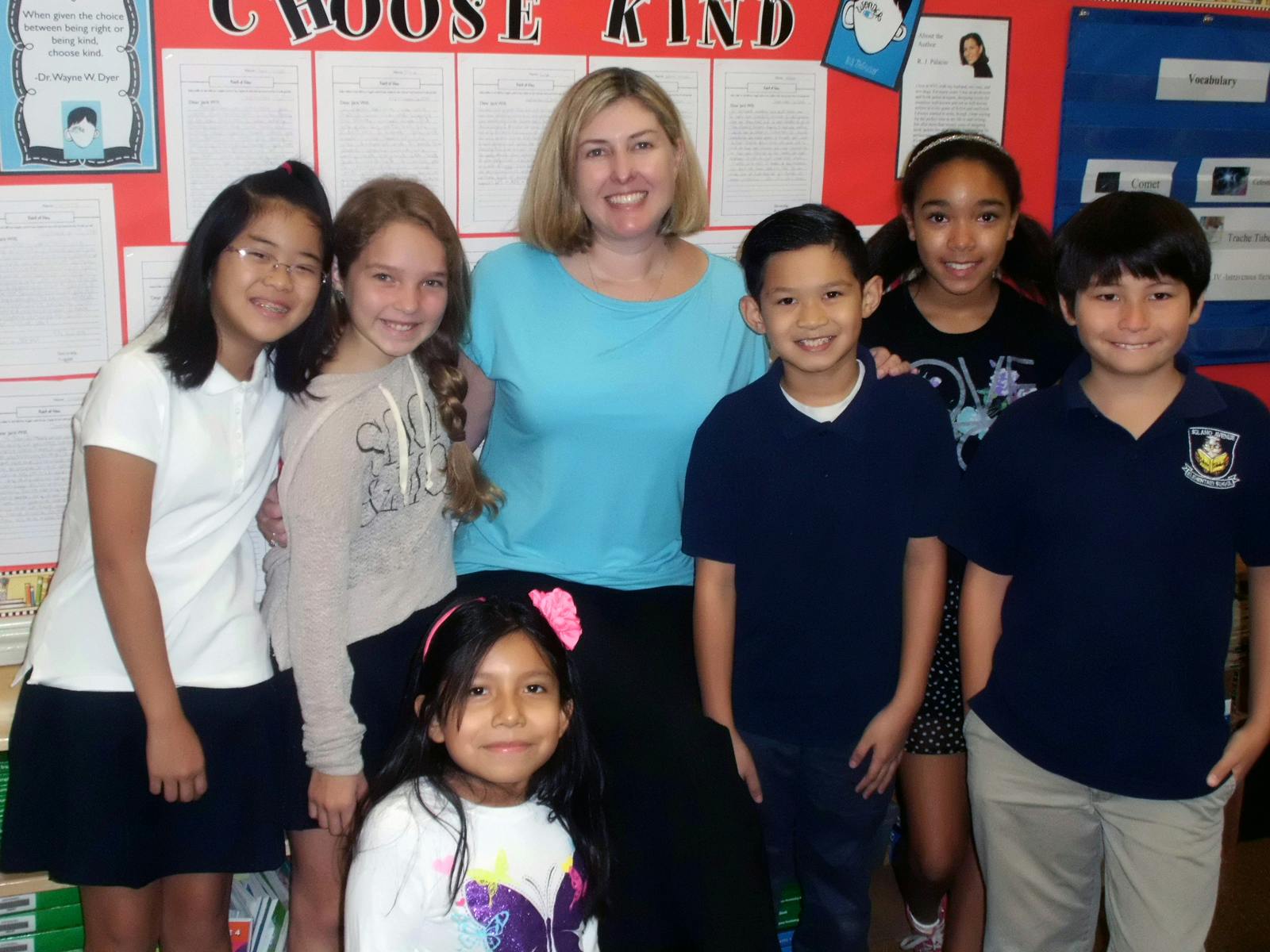Students in Shannon Garrison’s class at Solano Avenue Elementary School in Los Angeles have a unique way of comparing themselves to other 4 graders across the nation. This fall, Garrison, a graduate of UCLA’s signature Teacher Education Program (Psychology, ‘96; TEP, ’98), is embarking on her second term as a member of the National Assessment Governing Board (NAGB). The independent, bipartisan group sets policy for the National Assessment of Educational Progress (NAEP), commonly known as the Nation’s Report Card.
While NAGB data is collected nationally at random schools, Garrison’s students are aware that their teacher is part of a process that tracks the learning and success of 4, 8, and 12 graders across the United States.
“My students use a lot of the resources on the NAEP website,” says Garrison. “They love to test themselves and compare themselves to [students in] different states across the nation. It’s a great experience for students to be able to reflect on their learning.”
Garrison has been a member of NAGB since 2010 and served as vice chair of the organization’s Assessment Development Committee (ADC), before taking the helm as committee chair more than a year ago. As such, she presides over meetings of this sub-committee, which examines and approves assessment items for all NAEP assessments. In addition, she represents the ADC in meetings of NAGB’s executive committee.
“It’s quite an honor and an amazing learning experience,” she says. “As a teacher, I initially didn’t think too much about assessment beyond my classroom, so it’s really opened my eyes to policy and how to set policy, beyond my classroom, my school, and my district.”
Garrison says that her grade level is a pivotal time for NAGB’s research on student learning outcomes.
“Fourth grade is the first year where instead of learning to read, students are reading to learn,” she says. “We’re not looking so much at how kids are developing as readers as what they are comprehending from the reading. It is also the first year that many students delve into social studies and the sciences as major content areas. We’re looking to see if kids can read a piece of text, find evidence in it, and answer questions.”
Garrison says that NAGB has also been looking at Academic Preparedness for College and Job Training. While some question whether the research shows true student performance because it was done with a low-stakes test, research suggests that the students themselves are keenly interested in seeing how they stack up compared to other 12 graders across the nation. This is valuable data, gleaned from a sampling of 12 graders nationwide who represent both college-bound students and those who seek other options. She also says that NAGB has been looking at a definition of preparedness for job training in 12 grade, an important and as of yet, largely unexplored area.

“The research on preparedness for job training is still in progress,” says Garrison. “But the Board’s concern is sharing the information, so that others may learn from it and expand upon it.
“There’s much more research to be done because it’s a very difficult subject matter,” she notes. “We realize the challenge that’s there, but we are working hard to provide as much information as possible using our rich source of NAEP data.
Garrison, who has taught 4 grade at Solano Avenue since 1997, says that being on the frontlines as a classroom teacher greatly informs her service on NAGB, and that the respect that her colleagues have for classroom teachers is “amazing.”
“When I first started, I was very intimidated because I had never served on a board like this,” she recalls. “There are governors, state legislators, chief state school officers, superintendents, and I was just this little classroom teacher.
“I remember at my very first meeting, we were sitting in this huge ballroom in Washington D.C. having a discussion about an upcoming assessment. We each had a microphone in front of us and there were quite a few observers, so I was pretty nervous. I was listening intently to the conversation, and I remember the chairman of the board saying, ‘Let’s ask Shannon about that, she’s in the classroom.’ I was just shocked – they actually cared what I thought.”
Garrison, who represents 4 grade teachers nationwide,is joined by two other teachers on NAGB, who respectively represent 8 and 12 grade teachers. She says that at the end of the day, their concerns and goals are more similar than they are disparate, regardless of the issues they face in their own states and regions.
“I take special care to represent the fact that I work with English language learners, the fact that I work with students who maybe don’t have the resources that other students may have,” says Garrison. “We look a lot at bias and cultural relevance. I feel that it’s a big responsibility on my shoulders to make sure I represent teachers but more importantly, that I represent my students and parents in what I say and bring to the table.
“I think that one of the strengths of the Board is having members from all over – urban, suburban, and rural areas,” she says. “There is a lot of diversity on the Board. You would think there would be a lot of different concerns, but it all comes down to student success and how to help students be the best they can be. My concerns here in L.A. might be a bit different from someone who teaches in rural Georgia. But it’s amazing that there are more similarities than differences. It’s really a group of people who are focused on education and bringing out the best in students. I think that’s the power in it.”
Calyx Prohias. Photo by William Bertrand
